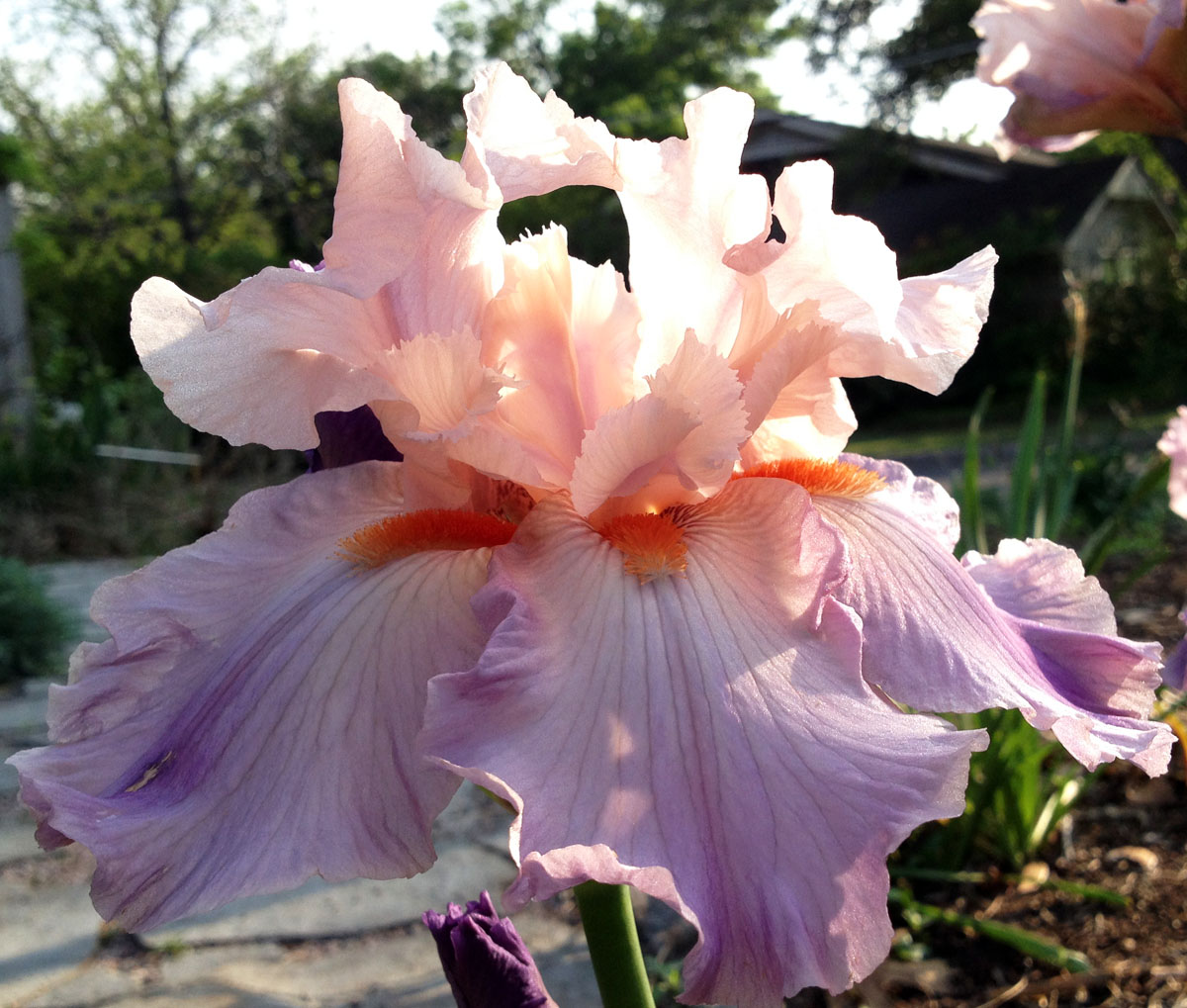I’m not into pink. I have an established preferred color palette in my garden that includes shades of blue, orange, purple, peach, chartreuse, white and silver. I’m a little neurotic about it. When my wedding bouquet showed up in shades of pink and lavender, instead of the agreed upon deep purples, burgundy and chartreuse, more than just a few expletives escaped my my mouth. I’m pretty sure I scared the daylights out of the poor delivery girl. So yes, me and pink have a sorted history. Yet, it has a way of worming it’s way into my garden despite my best efforts to keep it at bay. It’s vexing. Most plants sold as “peach” or “apricot” typically end up turning pink. That’s how pink keeps sneaking in. But when it shows up in the form of the stunning iris you see above (I call it “The Offender”), what can I do? I was promised these pass-along irises were white. White. Yet, pink and lavender they are. Well played pink, well played.

Yet, it is the season when it’s hard not to fall in love with irises, no matter their intended color. When it comes to these tenaciously tough bulbs (rhizomes to be botanically correct), I tend to tolerate all sorts of law-breaking color deviations that I otherwise would not. There are even yellow irises blooming in my garden at the moment. Yellow. I know, it’s cringe-worthy. Yet, I find it terribly difficult to yank them out.
If you’re trying to create a water-wise garden, which is in everyone’s best interest at this point, then irises should be a mandatory inclusion. Irises are practically allergic to any amount of excess moisture, tolerate the blazing Texas sun all day long and require little to no maintenance to look stunning.

Irises are commonly planted as bareroot rhizomes in the fall, although you’ll probably find potted plants available right now. Take care to bury only the bottom half of the rhizome in the soil. Bury too deep and they’ll rot. Plant in a sunny location, although irises can tolerate some afternoon shade or dappled shade. Long-lived stands of irises may stop blooming; if so, lift and divide the clump to give plants more elbow room. Irises that receive too much shade will also stop blooming. You really don’t have to fertilize iris plants much, but if you want the biggest bounty of blooms, fertilize them with a bulb food after their big spring flowering. In late winter, clean off old or damaged foliage, but don’t trim the green leaves unless you’re digging up the iris to transplant them.






